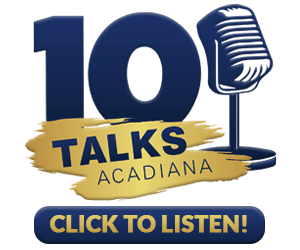LAFAYETTE, La. (KLFY) — The FDA has given the green light to the first COVID-19 vaccine in the United States. Health care workers could begin vaccinations as early as Monday in Louisiana and across the country. Doctors with Ochsner Health in Lafayette and New Orleans answered questions and explained the process during press briefings today in anticipation of the emergency use approval.
Sixty-five percent of the doctors at Ochsner Lafayette General are ready to roll up their sleeves for the Pfizer COVID-19 vaccine. 2,925 doses will be shipped to their system. Our Lady of Lourdes is expecting 1,075 doses. As per federal guidelines, the vaccine will be offered in the first phase to health care workers who are in direct contact with COVID patients and are in high-risk categories. Leaders in the Ochsner Health System say the vaccine is not mandatory for employees.
“We have not made that decision to make it required, but we’ve had some people ask about waiting,” said Ochsner Chief Medical Officer Dr. Robert Hart. “But waiting means more people in the hospital, more people dying, more people getting the disease and so we are certainly recommending it.”
Researchers have been working to develop a vaccine since the pandemic began, and more than 37,000 people have taken part in the clinical trial ahead of its release. Doctors on two panels today addressed concerns about the timing.
“Everything was done very quickly and was brought to market at the same time,” said Ochsner System Medical Director of Hospital Quality Dr. Katherine Baumgarten. “They did not cut corners, however, on safety, or on how they produced the vaccines. Everything was very rigorous in terms of how it was developed.”
The Pfizer vaccine is administered in two doses, 21 days apart. A person’s immunity to COVID-19 begins to build after the first dose and becomes most effective — 95 % — seven days after the second shot. Common side effects include pain in the arm where the shot is given, fatigue and fever which resolve in 24-48 hours.
“We know that means the vaccine is working, that it’s generating an immune response and those side effects are very short-lived,” said Baumgarten.
Rodney Good, the regional pharmacy director for LGH, wants people to make a decision about the vaccine based on good information.
“Take this time before the vaccine is here and you have the opportunity to take the dose. Please educate yourself however you need to do that,” said Good. “Don’t be swayed or biased by conspiracy theories or politics or any other kind of reason.”
The doctors Friday expressed a real sense of hope that we are seeing the beginning of the end.
“It’s exciting. I can tell you this is probably the most excited I’ve been since March,” said Ochsner Lafayette General Chief Medical Officer Dr. Amanda Logue.
But it’s cautious optimism because case counts are still increasing and they want people to remain vigilant.
“But we are still in this,” said Ochsner Head of Infections Disease Dr. Garabet Akoghlanian. “I really really urge every single person to, if you haven’t worn a mask even until now, please just for the next few months, it’s almost over.”
“We’ve done it for almost a year now,” said Logue. “We can do it for a few more months to make sure we do it right.”
The doctors expect the vaccine won’t be available to the general public until late winter or early spring. And they hope we can reach herd immunity by the middle of next year. The United States will reach that mark once 60 to 70 percent of the population is vaccinated. That equates to about 180 million people.
To listen to the entire press conference, check out the video below.
